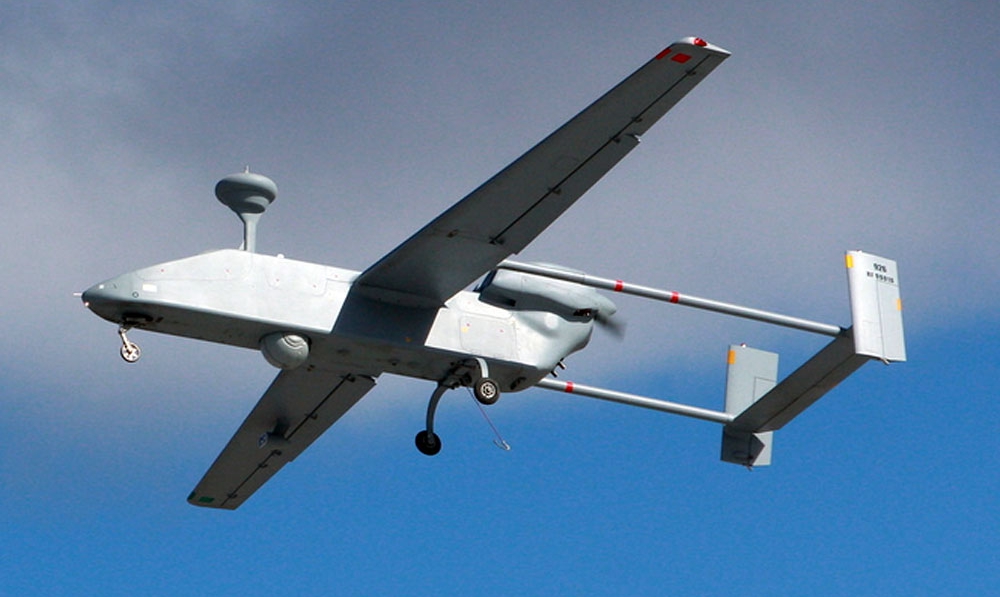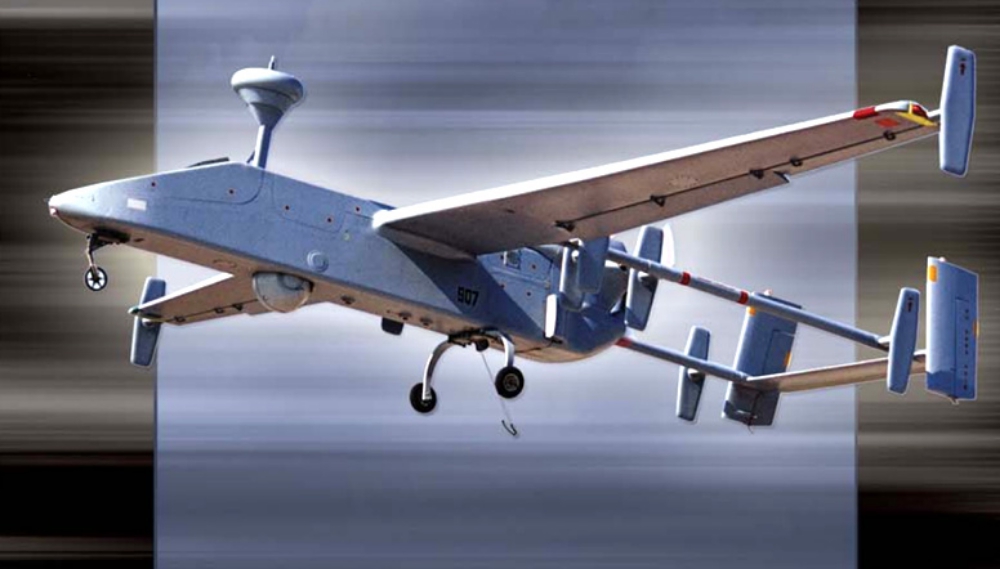Last Summer, Israel shot down yet another military drone near the line that separates the Israeli-occupied Golan Heights from the rest of Syria. The confrontation would have been business as usual, if not for a twist: Images of the destroyed drone showed Cyrillic tail markings and other identifiable components of a Forpost belonging to Russia.
The findings presented an awkward geopolitical moment: Syria and Russia are allies, and Syria and Israel are bitter enemies — but the Russian Forpost shot down by Israel was designed in Israel itself.
How Israeli-designed drones ended up supporting Syrian President Bashar al-Assad is a case study in the complicated relationship between Israel and Russia. Though Russia has been instrumental in protecting the Assad government, which appeared to be on the brink of collapse four years ago, it has also carefully cultivated a military relationship with Israel over the past decade.
After more than seven years of war, the skies over Syria are saturated with aircraft from multiple militaries and armed groups, each pursuing their own goals, including using the country as a weapons-testing ground. American airpower and Kurdish ground forces helped grind the Islamic State’s caliphate down to a tiny pocket before it dramatically collapsed this past spring. Meanwhile, Turkish occupation forces and their proxies are conducting a brutal campaign of repression in the Syrian-Kurdish canton of Afrin.
In the last five years, Israel has taken full advantage of the Syrian conflict to tighten its grip on the Golan Heights, a part of Syria that Israel has occupied since the Six-Day War in 1967, in violation of international law. Israeli forces treat the airspace above the territory as their own and use the conflict as a smoke screen to hit Hezbollah and Iranian ground targets, as well as UAVs. Periodically, Israel has shot down unmanned aerial vehicles like the Russian Forpost. The Forpost incident sheds light on one of the worst-kept secrets in the Middle East: that Russia is largely willing to ignore Israel’s air war against Iran and Hezbollah — both of which are Russian allies.
A Delicate Marriage of Convenience
The appearance of Israeli-licensed drones in Russia’s arsenal has its roots in an entirely different conflict: the 2008 Russo-Georgian war. When the Georgian military shot down Russian jets, the loss of equipment prompted Russia to invest in the sort of sophisticated UAV program that other nations, like the United States and Israel, already had. “Russia has shown a lot of interest in drones over the last years and decade. In the Georgia war, Russia realized that it had to build up its capabilities,” said Ulrike Franke, a drone researcher at the European Council on Foreign Relations. In an attempt to close this technological gap and reduce the risk to its pilots, Russia found an unlikely partner in Israel.
By 2010, Israel Aerospace Industries had made a $400 million deal for the transfer of UAV technology to Russia. The Israeli press speculated that Israel’s openness to the transaction was part of a yearslong series of quid pro quos, in exchange for Russia agreeing to withhold S-300 anti-aircraft missiles from Iran and Syria. Despite possible concerns from the U.S. government about the proliferation of advanced weapons technology from its Israeli ally to its Russian adversary, the Israeli military went ahead with training Russian officers to operate the drones.
In 2015, Russia and Israel made another significant deal after Russia intervened in a potential Israeli drone sale to Ukraine. Israel had planned to sell a number of advanced military UAVs to Ukraine, which was in the middle of a war with Russian-backed separatists. However, the Israelis reneged on the deal after Russia raised objections and ended up selling another batch of drones to the Russians.
As Russia has deployed drones in multiple theaters of war, its military has honed their use, Franke said. “It remains a bit tricky to determine how advanced Russia’s capabilities really are,” she said, “but they have certainly gained a lot of experience with systems such as the Forpost in Ukraine and Syria.”
Of the drones in Russia’s arsenal, the Forpost is among the most widely used and has the longest range. Unlike its American counterparts, such as the Predator and the Reaper, the Forpost is not an attack drone. Rather, its principal role is intelligence, surveillance, and reconnaissance, known as ISR. “Drones can remain over a point or person of interest for a very long time — hours or even days and weeks if drones are used in a relay,” Franke said. “This means that the kind of ISR a drone can collect of one target is much more detailed and much better than anything that was available before.”
What makes Israel’s downing of the Russian Forpost last summer so interesting, Franke said, is that the UAV is based on the Israel Aerospace Industries’ Searcher II — an Israeli drone. “It’s license-produced in Russia,” she said. “So, in a way, Israel shot down an Israeli drone.”
Despite the vehicle’s Israeli origins, the Russian military has been eager to put its face on the Forpost. Russian television featured close-up shots of the Forpost during a segment filmed at the Hmeimim airbase in Syria, and Russia has been surprisingly open about the significant role that UAVs like the Forpost have played in the Syrian conflict. Russian homegrown technical capabilities have also appeared to be improving, with rumors that the Russian military is testing a new model of an attack-capable drone called the Orion-E.
The Russian Ministry of Defense claimed that “at the start of the conflict, there were 400 UAV sorties per month. By late 2017, there were over 1,000 sorties per month,” according to Sam Bendett, an expert on Russian UAV technology at Virginia-based think tank CNA.
The presence of Israeli-licensed Russian drones on the battlefield exemplifies the complexities of Israel and Russia’s relationship in Syria, which also extend into diplomatic relations between the two governments.
Source: The Intercept


